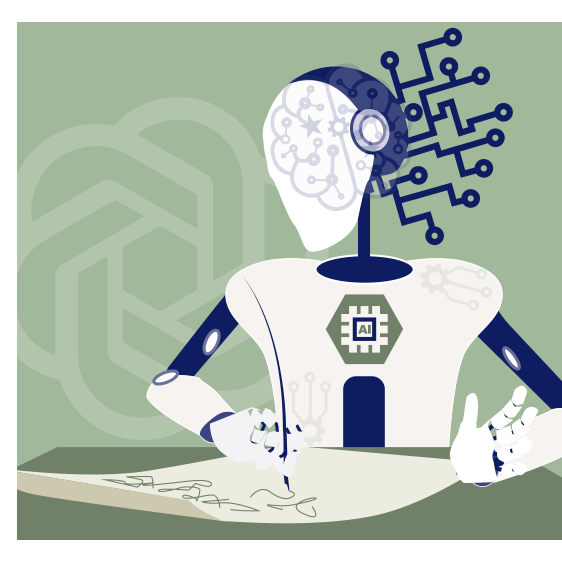Your Baby Cousin’s ENGL 160 Instructor Will Know How to Pretrain a Generative Transformer
quote
How are writing teachers thinking “generatively” about generative AI?
text

The ideal aim of composition courses like English 160 and 161 is to empower students to communicate effectively in a variety of genres. That fairly abstract phrase is meant to capture, like, a lot.
- Professional genres (emails, memos, reports, cover letters)
- Academic genres (research papers, research proposals, annotations)
- Public genres (opinion editorials, blogs, manifestos, tweets, essays, memoirs)
- Social or private genres (journals, conversations, even flirting)
All of these forms of communication rely on the core skills taught in composition. And, at least until recently, humans were the top scorers in every composition course in the world. By a landslide!
And then we designed machines that could identify patterns in massive datasets of human generated language. And—no lie—they’re kind of climbing the scoreboard.
Some writing instructors think the new machines should push us toward radical changes. But just as many appear merely lightly piqued by these latest bells and whistles. Composition expert Gavin P. Johnson captures the collective sentiment well in an article for the journal Composition Studies: “the discourse of crisis needs to give way to more generative thinking.”
So, how are writing teachers thinking “generatively” about generative AI?
2

Currently, courses like English 160 and 161 are supposed to teach undergraduates how to generate their own thoughts and harness them toward particular purposes and audiences. But future writing courses may spend just as much time teaching students how to harness algorithms and AIs to recognize emerging rhetorical opportunities and go from idea to content in the blink of an eye.
A group of composition experts has already gathered syllabuses and assignments in a peer-reviewed and edited collection openly available called TextGenEd. These assignments have titles like “Understanding Markov Chains” and “Decoding an AI Bot’s Chatting Pattern.” These are not your grandpa’s English 160 assignments.
And they shouldn’t be. Every year, at least one STEM student informs me that they will never have to write another research paper after my class (or at least after graduation). Increasingly, the “vibe” from students is that they want to read (cf. this meme a former student sent me), want to write better, but just can’t justify it anymore. If ChatGPT can do it in two minutes, why do they need to spend hours on it when they could be doing something more immediately gratifying? And especially as the world expects more and more from college graduates, and students pack more and more into their schedules, cutting corners becomes a survival mechanism.
The syllabus future writing instructors imagine is meant to empower students to master the algorithmic landscape of contemporary communication, to game the AIs and platforms for social and linguistic justice, to be rhetorical engineers, hackers of publics, conversation technicians. Not just “student writers.”
Future writing courses are already addressing these realities, reframing what looks like “cutting corners” today as a new form of critical AI literacy for… well… for today.